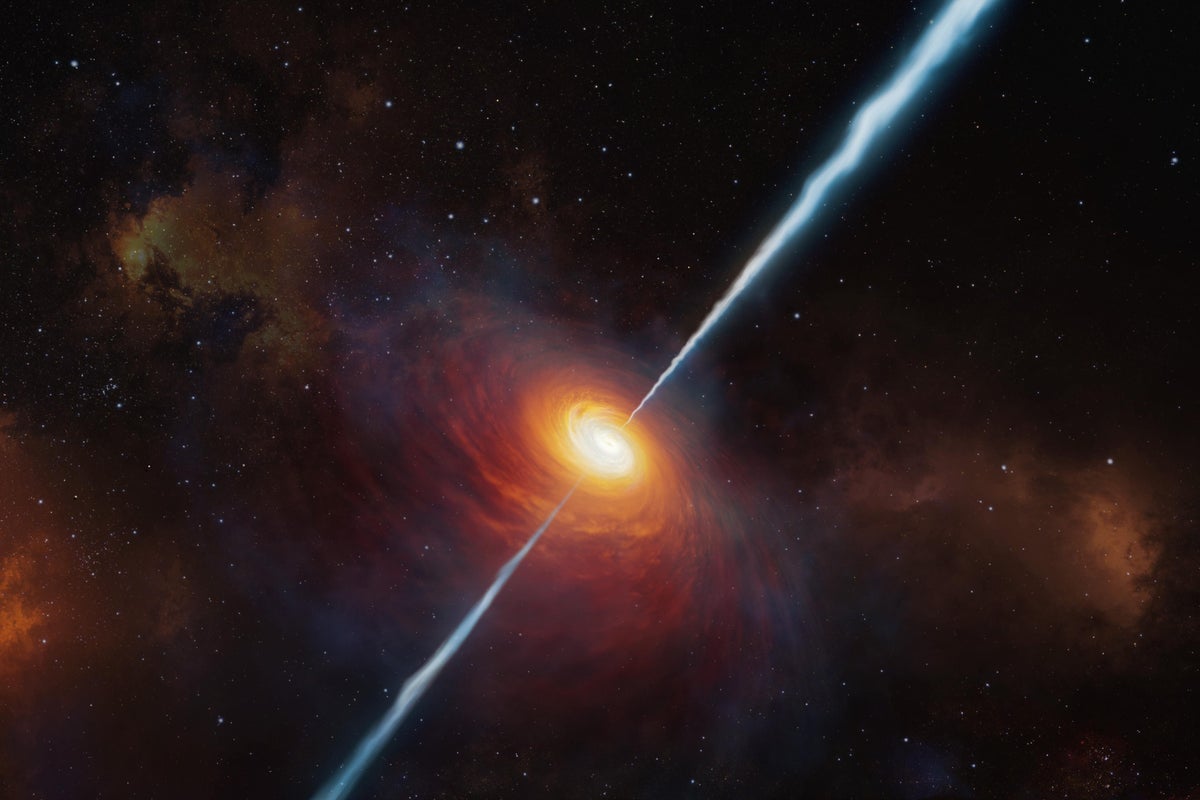
Quasars – the brightest and most powerful objects in the Universe – are ignited when galaxies collide, astronomers have said.
These celestial objects can be a trillion times brighter than the Sun, according to Nasa.
Although first discovered 60 years ago, quasars have remained a mystery because it was unclear how such powerful activity could be generated.
Research published in the journal Monthly Notices of the Royal Astronomical Society suggests it is a result of galaxies merging.
Scientists led by the Universities of Sheffield and Hertfordshire analysed data from the Isaac Newton Telescope in La Palma.
They found what they describe as “the presence of distorted structures” in the galaxies that contain quasars.
Professor Clive Tadhunter, from the University of Sheffield’s Department of Physics and Astronomy, said: “Quasars are one of the most extreme phenomena in the Universe, and what we see is likely to represent the future of our own Milky Way galaxy when it collides with the Andromeda galaxy in about five billion years.
Quasars play a key role in our understanding of the history of the Universe, and possibly also the future of the Milky Way— Dr Jonny Pierce
“It’s exciting to observe these events and finally understand why they occur – but thankfully Earth won’t be anywhere near one of these apocalyptic episodes for quite some time.”
At the centre of most galaxies are thought to be supermassive black holes – with masses at millions of times the mass of the Sun.
These galaxies also contain substantial amounts of gas that are out of reach of the black holes.
When galaxies collide, the gases are driven towards the black hole where it is then consumed, releasing “extraordinary amounts of energy in the form of radiation, resulting in the characteristic quasar brilliance”.
The scientists compared observations of 48 quasars and their host galaxies with images of more than 100 non-quasar galaxies.
The team concluded that galaxies hosting quasars are approximately three times as likely to be interacting or colliding with other galaxies.
Dr Jonny Pierce, postdoctoral research fellow at the University of Hertfordshire, said: “It’s an area that scientists around the world are keen to learn more about – one of the main scientific motivations for Nasa’s James Webb Space Telescope was to study the earliest galaxies in the Universe, and Webb is capable of detecting light from even the most distant quasars, emitted nearly 13 billion years ago.
“Quasars play a key role in our understanding of the history of the Universe, and possibly also the future of the Milky Way.”







